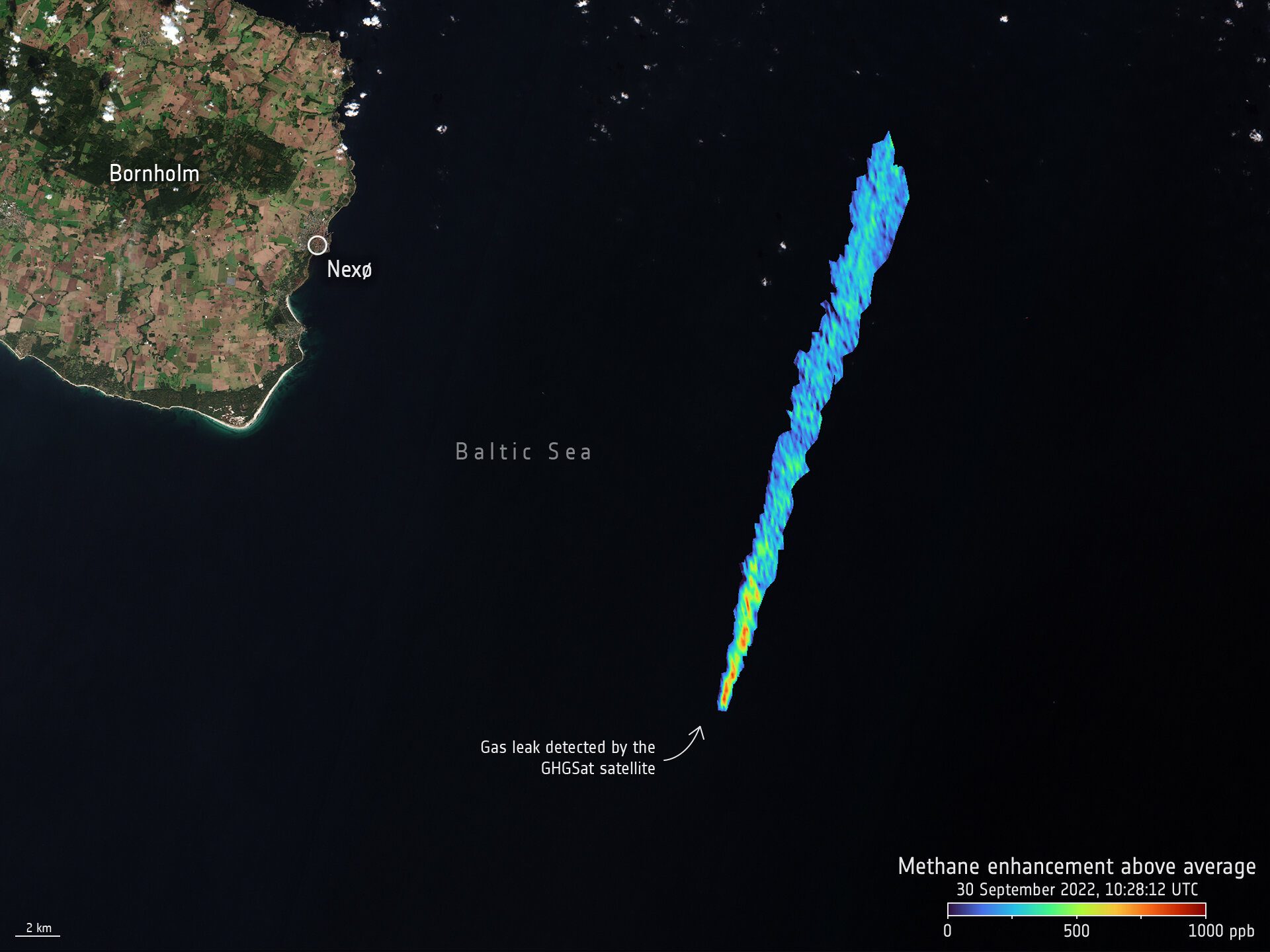While questions about last week’s Nordstream gas pipeline leak continue to be unanswered, satellite images are starting to show the environmental impact of the incident. Now, the European Space Agency (ESA) has shared before-and-after satellite images of the affected portion of sea near the Danish Island of Bornholm.
On September 24, images taken by Sentinel-1 showed no disturbance to the water. By the evening of September 28, the same satellite spotted a ferocious plume of bubbles rising to the sea surface above the leak.
News of the leak first broke on September 27 when a series of explosions and gas leaks were reported along Nord Stream 1 and Nord Stream 2, two pipelines that transport natural gas from Russia to Germany. Given the simmering geopolitical tensions between Russia and Europe at the moment, the incident was huge news.
But even beyond its political impact, many were concerned about how the gas leak might impact the environment.
On September 30, the estimated emission rate derived from GHGSat’s first methane concentration measurement was 79 000 kg per hour. Image credit: GHGSat
The Nord Stream pipelines are leaking natural gas, which is primarily made up of methane, a greenhouse gas that’s more than 25 times as potent as carbon dioxide at trapping heat in the atmosphere. Much of this methane will bubble up to the surface of the sea and enter Earth’s atmosphere where it will contribute to further climate change.
On September 30, GHGSat’s satellites estimated that the leak spurted out 79,000 kilograms (174,165 pounds) of natural gas per hour, making it the largest single-point methane leak ever detected by GHGSat.
“Predictably, the media and the world have turned to space to understand the scale of the Nord Stream industrial disaster. While we await further investigation on the cause, GHGSat responded quickly, measuring 79 000 kg per hour of methane coming from the leaks. We will continue tasking GHGSat satellites for the Nord Stream sites until we no longer detect emissions,” GHGSat Director for Europe, Adina Gillespie, said in a statement.
The more immediate impact the gas leak may have on the local ecosystem of the Baltic Sea is also concerning. Just like an oil spill, a gas leak in the ocean can cause disruption to an ecosystem. A significant portion of the natural gas will dissolve in the sea, which has the potential to turn the water toxic for fish, shellfish, and other marine life.
As damaging as the leak may be, it’s important to put it into the context of methane emissions pumped out by industry. ESA estimates that the latest release from the Nord Stream leak is “roughly equivalent to one and a half days of global methane emissions.”
When it comes to sustained environmental damage, the day-to-day burning of fossil fuels remains unsurpassed.
Source Link: Nord Stream Pipeline Methane Leak May Be Biggest Ever Seen By Satellite
